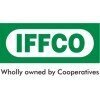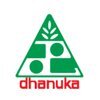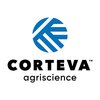
i
Deccan Fine
Chemicals
Filter interviews by
Deccan Fine Chemicals Process Engineer Interview Questions and Answers
9 Interview questions
Practical and theoretical knowledge are interconnected, enhancing understanding and application in engineering processes.
Theoretical knowledge provides the foundational principles, such as thermodynamics in process engineering.
Practical knowledge involves hands-on experience, like operating machinery or conducting experiments.
Both types of knowledge are essential for problem-solving; for example, applying theoreti...
I am interested in research areas related to sustainable energy, process optimization, and materials science.
Sustainable energy
Process optimization
Materials science
Boiling point of unknown liquid can be measured using a variety of methods including distillation, gas chromatography, and boiling point apparatus.
Use a distillation setup to heat the liquid and collect the vapor at different temperatures to determine the boiling point.
Perform gas chromatography to separate the components of the liquid and identify the boiling point of the unknown liquid.
Utilize a boiling point ap...
Different types of flow reactors include continuous stirred tank reactors, plug flow reactors, and packed bed reactors.
Continuous stirred tank reactors (CSTR) have continuous flow and well-mixed contents.
Plug flow reactors have a uniform flow with minimal mixing.
Packed bed reactors contain catalyst particles packed in a bed through which the reactants flow.
Other types include tubular reactors, fluidized bed reacto...
To increase pump head without modifying existing pump, adjust system parameters like pipe diameter, pump speed, or impeller size.
Increase pump speed to increase head
Use a larger impeller to increase head
Reduce pipe diameter to increase head
Optimize system layout to reduce head losses
My favorite subject is chemical engineering, focusing on process design and optimization for efficient production.
Process design involves creating efficient systems for chemical production, like distillation columns.
Optimization techniques, such as linear programming, help improve yield and reduce costs.
Safety protocols are crucial; for example, using hazard analysis to prevent chemical spills.
Sustainability is ke...
An orifice meter is a device used to measure the flow rate of a fluid, while valves and distillation columns are important components in process engineering.
Orifice meter is a type of flow meter that uses a constriction in the flow path to create a pressure drop, which is then used to calculate the flow rate.
Different types of valves include gate valves, globe valves, ball valves, butterfly valves, and check valve...
Heat exchanger design involves determining the size, shape, and materials of the exchanger to efficiently transfer heat between two fluids.
Consider the heat transfer rate required for the specific application
Select the appropriate type of heat exchanger (e.g. shell and tube, plate, finned)
Calculate the surface area needed for effective heat transfer
Choose materials that can withstand the temperature and pressure c...
There are various types of dryers used in process engineering such as rotary, fluidized bed, spray, freeze, and vacuum dryers. Rotameter is a flow measuring device.
Rotary dryers are used for drying materials by direct contact with hot gas.
Fluidized bed dryers use hot air to suspend and fluidize the material to be dried.
Spray dryers use a nozzle to atomize the liquid feed into a fine mist which is then dried by hot...
Deccan Fine Chemicals Process Engineer Interview Experiences
8 interviews found
I applied via Company Website and was interviewed in Jun 2024. There were 2 interview rounds.
(2 Questions)
- Q1. What is favourite subject
- Ans.
My favorite subject is Chemical Engineering, as it combines principles of chemistry, physics, and mathematics to solve real-world problems.
Chemical Engineering involves designing processes for large-scale production, such as creating pharmaceuticals.
It requires a strong understanding of thermodynamics, which is crucial for energy efficiency in processes.
I enjoy the challenge of optimizing processes to reduce waste and ...
- Q2. How inter related to pratical knowledge and theoretical knowledge
- Ans.
Practical and theoretical knowledge are interconnected, enhancing understanding and application in engineering processes.
Theoretical knowledge provides the foundational principles, such as thermodynamics in process engineering.
Practical knowledge involves hands-on experience, like operating machinery or conducting experiments.
Both types of knowledge are essential for problem-solving; for example, applying theoretical c...
(2 Questions)
- Q1. BRIEFLY EXPLAIN Ur family details
- Q2. Why did you here
- Ans.
I am here to leverage my skills in process optimization and contribute to innovative engineering solutions.
I have a strong background in chemical engineering, which equips me to analyze and improve processes effectively.
In my previous role, I successfully reduced production costs by 15% through process optimization.
I am passionate about sustainability and have implemented eco-friendly practices in past projects.
I thriv...
Interview Preparation Tips
I applied via Naukri.com and was interviewed before Nov 2023. There were 2 interview rounds.
(6 Questions)
- Q1. How to increase pump head without modifying existing pump?
- Ans.
To increase pump head without modifying existing pump, adjust system parameters like pipe diameter, pump speed, or impeller size.
Increase pump speed to increase head
Use a larger impeller to increase head
Reduce pipe diameter to increase head
Optimize system layout to reduce head losses
- Q2. What are different type of flow reactors?
- Ans.
Different types of flow reactors include continuous stirred tank reactors, plug flow reactors, and packed bed reactors.
Continuous stirred tank reactors (CSTR) have continuous flow and well-mixed contents.
Plug flow reactors have a uniform flow with minimal mixing.
Packed bed reactors contain catalyst particles packed in a bed through which the reactants flow.
Other types include tubular reactors, fluidized bed reactors, a...
- Q3. How to increase the existing scrubber capacity to cope up with new higher capacities?
- Ans.
To increase scrubber capacity, consider upgrading equipment, optimizing process parameters, and expanding physical space.
Upgrade existing scrubber equipment to handle higher capacities
Optimize process parameters such as flow rates and chemical dosages
Expand physical space to accommodate larger scrubber units
Consider implementing advanced technologies like automation and monitoring systems
Consult with experts in the fie...
- Q4. What are the reasons behind distillate product purity( under same column and feed and operating condistions)
- Ans.
Distillate product purity is influenced by factors such as feed composition, operating conditions, column design, and efficiency of separation processes.
Feed composition - The composition of the feed entering the distillation column will directly impact the purity of the distillate product.
Operating conditions - Factors such as temperature, pressure, and flow rates play a crucial role in determining the purity of the d...
- Q5. How do you measure boiling point of unknown liquid?
- Ans.
Boiling point of unknown liquid can be measured using a variety of methods including distillation, gas chromatography, and boiling point apparatus.
Use a distillation setup to heat the liquid and collect the vapor at different temperatures to determine the boiling point.
Perform gas chromatography to separate the components of the liquid and identify the boiling point of the unknown liquid.
Utilize a boiling point apparat...
- Q6. What is fire triangle and related question.
(4 Questions)
- Q1. Why should we hire you ?
- Ans.
I have a strong background in process engineering with a proven track record of improving efficiency and reducing costs.
I have a Bachelor's degree in Chemical Engineering and 5 years of experience in process engineering.
I have successfully implemented process improvements at my previous company, resulting in a 20% increase in production efficiency.
I am skilled in using process simulation software such as Aspen HYSYS an...
- Q2. Prove me that you are not lazy.
- Q3. As per your resume, prove us that you are a quick learner
- Q4. What tipe of research areas that you are interested in?
- Ans.
I am interested in research areas related to sustainable energy, process optimization, and materials science.
Sustainable energy
Process optimization
Materials science
Interview Preparation Tips
- Pumps
- Basic concepts
- Experience related questions
(2 Questions)
- Q1. Unit operations
- Q2. Pump calculations
(2 Questions)
- Q1. Situation based
- Q2. Critical thinking
I applied via Campus Placement and was interviewed before Sep 2023. There were 2 interview rounds.
(2 Questions)
- Q1. Heat Exchanger Design
- Ans.
Heat exchanger design involves determining the size, shape, and materials of the exchanger to efficiently transfer heat between two fluids.
Consider the heat transfer rate required for the specific application
Select the appropriate type of heat exchanger (e.g. shell and tube, plate, finned)
Calculate the surface area needed for effective heat transfer
Choose materials that can withstand the temperature and pressure condit...
- Q2. Pressure drop Calculations
(1 Question)
- Q1. Regarding Hobbies
I applied via Naukri.com and was interviewed before Apr 2022. There were 4 interview rounds.

(1 Question)
- Q1. Process Engineering calculations, Case study
(1 Question)
- Q1. Equipment design, line sizing, troubleshooting
(1 Question)
- Q1. Personal Details, reason for job change, mental stability question
Interview Preparation Tips
- Process Engineering

(1 Question)
- Q1. Just basics about your favorite subject
- Ans.
My favorite subject is chemical engineering, focusing on process design and optimization for efficient production.
Process design involves creating efficient systems for chemical production, like distillation columns.
Optimization techniques, such as linear programming, help improve yield and reduce costs.
Safety protocols are crucial; for example, using hazard analysis to prevent chemical spills.
Sustainability is key; im...
Interview Preparation Tips
I applied via Campus Placement and was interviewed before Mar 2022. There were 2 interview rounds.

(2 Questions)
- Q1. What is the orifice meter and different types of valves and distillation column..
- Ans.
An orifice meter is a device used to measure the flow rate of a fluid, while valves and distillation columns are important components in process engineering.
Orifice meter is a type of flow meter that uses a constriction in the flow path to create a pressure drop, which is then used to calculate the flow rate.
Different types of valves include gate valves, globe valves, ball valves, butterfly valves, and check valves. Ea...
- Q2. Types of dryers and rotameter
- Ans.
There are various types of dryers used in process engineering such as rotary, fluidized bed, spray, freeze, and vacuum dryers. Rotameter is a flow measuring device.
Rotary dryers are used for drying materials by direct contact with hot gas.
Fluidized bed dryers use hot air to suspend and fluidize the material to be dried.
Spray dryers use a nozzle to atomize the liquid feed into a fine mist which is then dried by hot air.
...
Interview Preparation Tips
(1 Question)
- Q1. Generally they ask resume oriented questions, Projects you had completed, College academics
Top trending discussions






Interview questions from similar companies
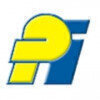
I applied via Recruitment Consulltant and was interviewed in Nov 2021. There were 3 interview rounds.

(2 Questions)
- Q1. Questions related to - Salary Process safely,Role of Process engineering in product change over, Static charge, Dust explosions
- Q2. Pump hydraulic, Existing job profile, Achievements in existing job
(1 Question)
- Q1. Salary Negotiations and personal details
Interview Preparation Tips
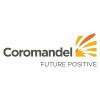
Process Engineer Interview Questions & Answers
Coromandel Internationalposted on 17 Nov 2021
I applied via Campus Placement and was interviewed in May 2021. There were 5 interview rounds.
Interview Questionnaire
1 Question
- Q1. How do you use the concept of laws ( thermodynamics laws etc..) in industry
- Ans.
Laws of thermodynamics are used in industry to optimize energy usage, design efficient processes and equipment, and ensure safety.
Thermodynamics laws are used to optimize energy usage in industrial processes
They are used to design efficient processes and equipment
They ensure safety by preventing accidents and explosions
Examples include designing heat exchangers, optimizing steam turbines, and preventing thermal runaway...
Interview Preparation Tips
Deccan Fine Chemicals Interview FAQs
Some of the top questions asked at the Deccan Fine Chemicals Process Engineer interview -
Tell us how to improve this page.
Deccan Fine Chemicals Interviews By Designations
- Deccan Fine Chemicals Process Engineer Interview Questions
- Deccan Fine Chemicals Operations Engineer Interview Questions
- Deccan Fine Chemicals Graduate Trainee Interview Questions
- Deccan Fine Chemicals Graduate Engineer Trainee (Get) Interview Questions
- Deccan Fine Chemicals Junior Engineer Interview Questions
- Deccan Fine Chemicals Senior Engineer Interview Questions
- Deccan Fine Chemicals Maintenance Engineer Interview Questions
- Deccan Fine Chemicals Shift Engineer Interview Questions
- Show more
Interview Questions for Popular Designations
- Senior Engineer Interview Questions
- Production Engineer Interview Questions
- Project Engineer Interview Questions
- Junior Engineer Interview Questions
- Associate Engineer Interview Questions
- Graduate Engineer Interview Questions
- Shift Engineer Interview Questions
- Senior Process Engineer Interview Questions
- Show more
Overall Interview Experience Rating
based on 6 interview experiences
Difficulty level
Duration
Interview Questions from Similar Companies
Deccan Fine Chemicals Process Engineer Reviews and Ratings
based on 35 reviews
Rating in categories
|
Junior Engineer
383
salaries
| ₹2.1 L/yr - ₹6 L/yr |
|
Process Engineer
161
salaries
| ₹3.2 L/yr - ₹7.2 L/yr |
|
Senior Executive
154
salaries
| ₹4.7 L/yr - ₹10.2 L/yr |
|
Engineer
125
salaries
| ₹3 L/yr - ₹6.2 L/yr |
|
Assistant Manager
115
salaries
| ₹6.1 L/yr - ₹12.5 L/yr |
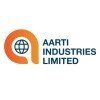
Aarti Industries

UPL

Coromandel International

PI Industries
- Home >
- Interviews >
- Deccan Fine Chemicals Interview Questions




